Studeren met autisme, een ander perspectief
Mensen met autisme ervaren de wereld op een unieke manier. Hun interpretatie van verschillende prikkels uit een omgeving zorgt voor een uniek perspectief wat ons iets bijleert over ruimtelijke kwaliteiten in die omgeving. Vanuit dit standpunt kunnen we architectuur herdenken, evalueren en verbeteren. Dit onderzoek zocht naar deze kwaliteiten en bracht ze in kaart door in dialoog te gaan met studenten met autisme.
Student zijn en autisme hebben
Uit dit onderzoek, waarin vijf studenten met autisme meermaals geïnterviewd werden, is gebleken dat student zijn en autisme hebben, één grote uitdaging is. Meerdere bronnen bevestigen dat slechts één derde van de starters met autisme uiteindelijk zal afstuderen. Naast faalangst en stress hebben studenten met autisme meer problemen met eenzaamheid, het vinden van structuur en gezond leven. Verder hebben ze ook meer moeite om zich te focussen tijdens lessen of examens. Deze extra moeite met focus is mede te wijten aan de aanwezigheid van medestudenten, het interieur of te fel licht.
Na de verschillende interviews, blijken drie grote themas een hoofdrol te spelen in hun studentenleven, namelijk: hun studie, hun sociaal leven en zich terugtrekken. Hierbij zijn er veel gelijkenissen met het leven van andere studenten, zoals studeren, vrienden maken etc., maar er zijn ook verschillen. Zo hebben sommige studenten met autisme moeite met het correct interpreteren van examenvragen, zijn groepswerken sociaal uitputtend, en zijn de pauzes tussen de lessen eerder vermoeiend dan ontspannend. Daarom hebben ze nood aan ruimte/tijd om zich tijdelijk terug te trekken.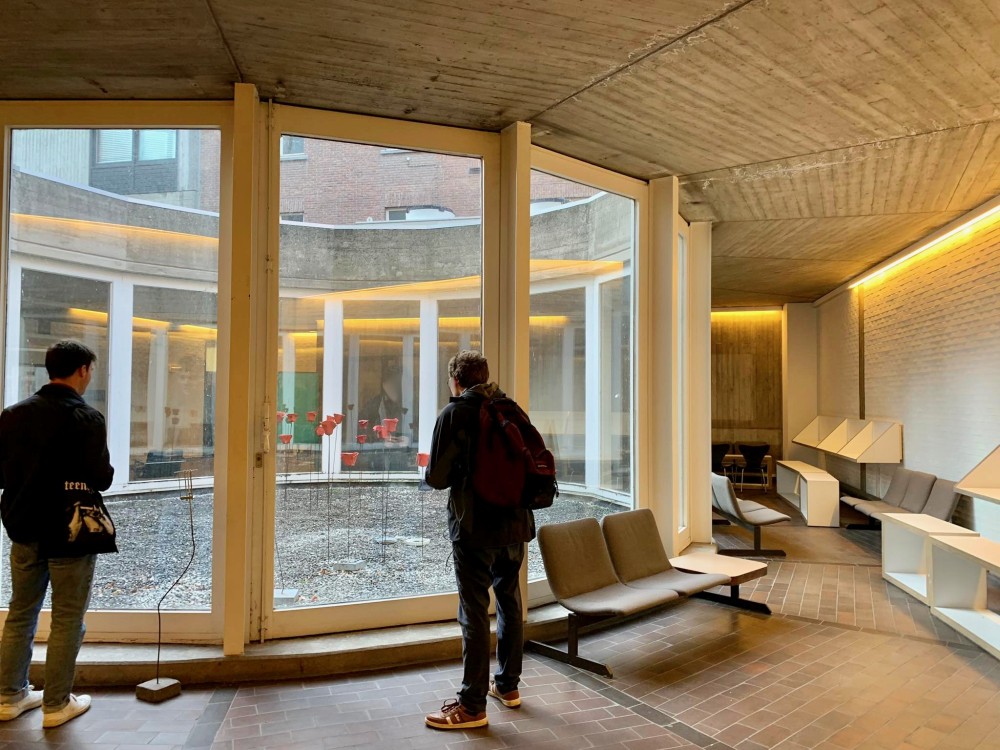
Architectuur + Autisme
In hun studentenleven blijkt architectuur een belangrijke rol te spelen, denk aan de duidelijkheid/leesbaarheid van een gebouw, hoeveel afleiding er is, en de mogelijkheid tot ontsnapping in of naast een ruimte.
Allereerst is het belangrijk dat gebouwen leesbaar zijn, al dan niet met behulp van signalisatie. Dit zorgt ervoor dat ze de ruimtes begrijpen en aanliggende ruimtes kunnen inschatten. Mensen met autisme schatten graag in wat hun te wachten staat zodat ze minder onzeker zijn. Daarom is het belangrijk om te streven naar ondubbelzinnige signalisatie of grondplannen.
Verder kan architectuur hun focus beïnvloeden en in welke mate ze over- of onderprikkeld worden. Dit is steeds persoonsafhankelijk. Zo worden sommige mensen met autisme overprikkeld door licht, geluid of tast en andere willen net die prikkels ervaren. Hoe dan ook, deze prikkels hangen ook af van de situatie en de ruimte waarin ze zich bevinden. Zo zijn bepaalde elementen, zoals iemand die klikt met een pen, meer afleidend tijdens een examen dan tijdens een les. Ook zal de aanpasbaarheid van de ruimte belangrijk zijn, zoals het dimmen van het licht.
Als laatste is ontsnapping een belangrijke factor. Dit geeft een mogelijkheid om het verwerken van prikkels onder controle te krijgen. Uit onderzoek bleken zogenaamde “escape spaces” handig te zijn. Dit zijn geheel of gedeeltelijk fysiek afgezonderde ruimtes waarin mensen kunnen ontsnappen. Hoewel een fysiek afgezonderde ruimte het meest zou helpen, zijn andere ruimtes ook nuttig. Zo helpt het (tijdelijk) blokkeren van het gezichtsveld ook al om prikkels te controleren.
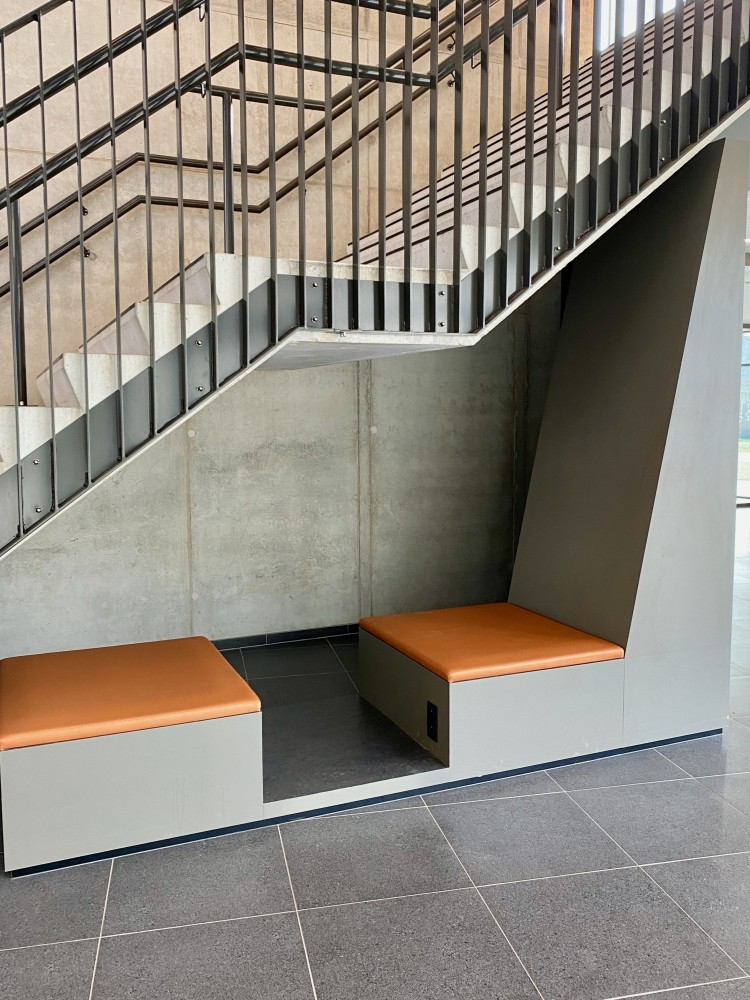
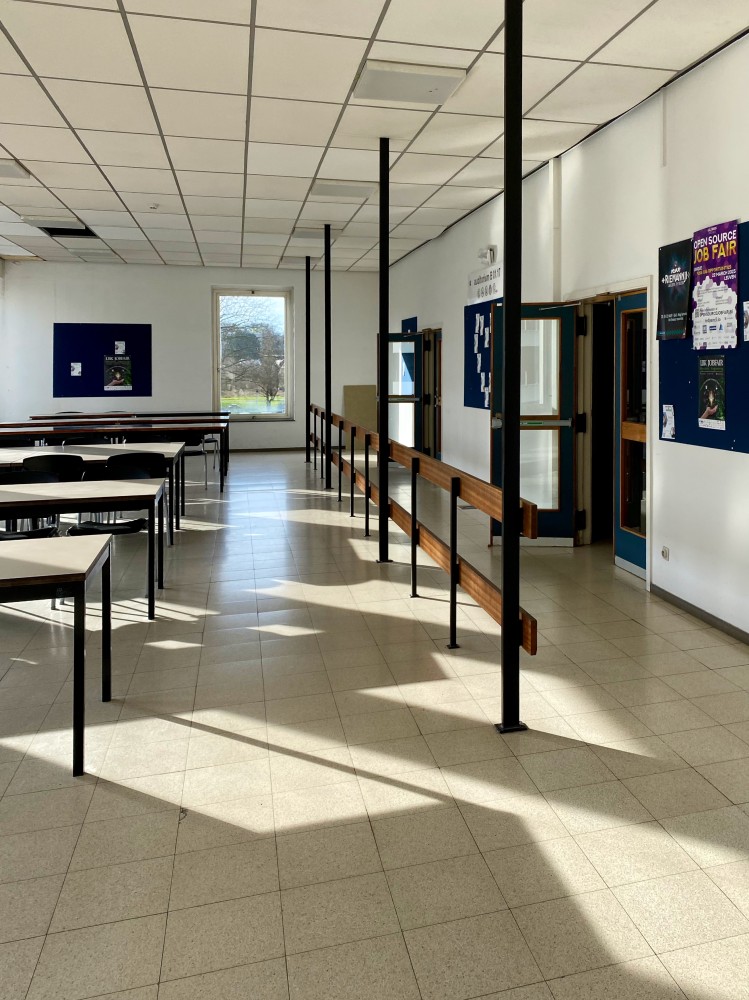
Verbeteringen
In het algemeen is er veel ruimte om het studentenleven van studenten met autisme te verbeteren. Allereerst op vlak van architectuur, kunnen gebouwen verbeterd worden door zowel kleinschalige als eerder grotere ingrepen. Zo kan er meer aandacht besteed worden aan akoestiek, maar ook aan kleurgebruik, lichtinfiltratie of texturen in de ruimte. Als voorbeeld genieten mensen met autisme meer van ruimtes met pastelkleuren waarin het (zon)licht gedempt is. Dit betekent niet dat ze meer van pastelkleuren houden, maar dat het een verschil maakt in hun beleving van de ruimte waarin ze zich al dan niet comfortabel voelen. Aansluitend zorgen duidelijke signalisatie en communicatie ook veel meer comfort. Zo kunnen ontwerpers zorgen voor duidelijke grondplannen of kan subtiele signalisatie geïntegreerd worden. Dit kan versterkt worden door tijdelijke signalisatie of signalisatieplannen die duidelijk zichtbaar geplaatst zijn in gebouwen of online.
Als laatste is het ook belangrijk dat mensen begrijpen wat het betekent om autisme te hebben. Verkeerde vooroordelen, zoals asociaal of het Rain Man stereotype, leiden tot foutieve ontwerpbeslissingen. Om deze vooroordelen tegen te counteren, wil ik vermelden dat het IQ van een persoon los bekeken worden van diens autisme. Autistische mensen zijn niet noodzakelijk slimmer/dommer, maar hebben vaak een fascinatie voor een bepaalde thematiek wat zorgt voor veel kennis van dat thema. Hierdoor kunnen ze slimmer overkomen. Anderzijds zijn ze ook niet asociaal maar verkiezen mensen met autisme vaak wel één-op-één conversaties. Dit komt doordat groepen zorgen voor meer moeilijk-regelbare prikkels, die ze liever vermijden.
Existenz
Deze mogelijke verbeteringen werden gepresenteerd aan studentenvereniging Existenz die deze tijdens een evenement (deels) hebben geïmplementeerd. Zo gaven ze op een creatieve manier een overzicht van de verschillende activiteiten, integreerde ze subtiel escape spaces en dimden ze lichten op een creatieve manier. Achteraf vertelden de studenten met autisme dat hun ervaring van het evenement inderdaad aangenamer werd door dat ze minder last hadden van overweldigende situaties.
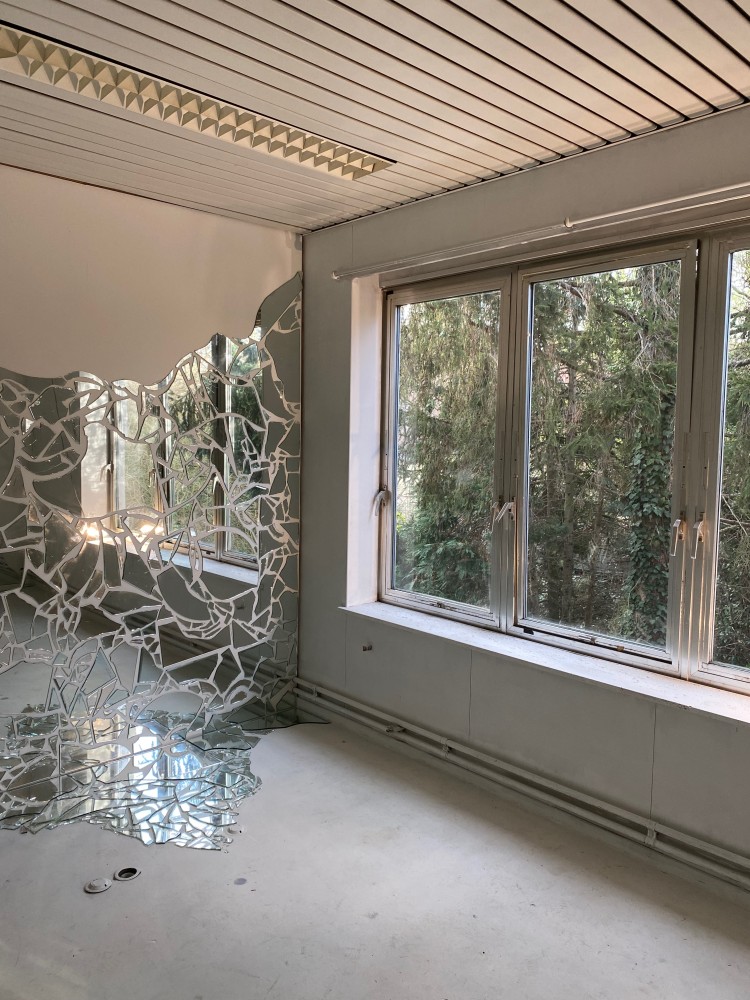
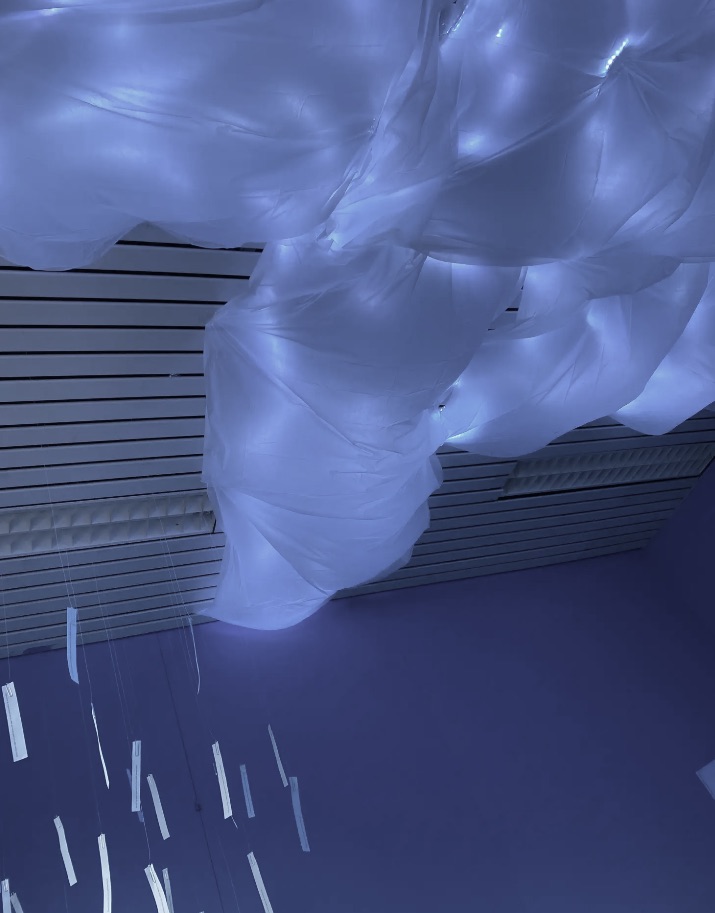
Vaak zijn het eerder kleinere aanpassingen, die het verschil maken, zoals lichten dimmen, duidelijke signalisaties of subtiele escape spaces. Zowel ontwerpers, als organisatoren hebben een grote invloed op de ervaring van studenten met autisme, hun studentenleven en zelfs hun kansen om een hoger onderwijs diploma te behalen. Hoe dan ook, deze verbeteringen kunnen ook andere mensen helpen. Meer nog, mensen met autisme zouden net een inspiratiebron kunnen zijn om architectuur voor iedereen beter te maken. Onbewust worden mensen meer uitgeput door prikkels uit bepaalde situaties/ruimtelijke elementen. Daarom kan een dialoog met autistische mensen zorgen voor betere ontwerpen, het organiseren en uitvoeren van evenement voor iedereen.
Bibliografie
-
Anderson, A. H., Carter, M., & Stephenson, J. (2018). Perspectives of University Students with Autism Spectrum Disorder. Journal of Autism and Developmental Disorders, 48(3), 651–665. https://doi.org/10.1007/s10803- 017-3257-3
-
APA, DSM-5. (2010). Diagnostic and Statistical Manual of Mental Disorders - Development. Consulted on 5 March 2023, www.dsm5.org/Pages/Default.aspx
-
APA, DSM-5. (2013). Diagnostic and statistical manual of mental disorders: DSM-5TM (5th ed.). American Psychiatric Publishing, Inc.. https://doi.org/10.1176/appi.books.9780890425596
-
Baumers, S., & Heylighen, A. (2010). Harnessing Different Dimensions of Space: The Built Environment in Auti-biographies. In P. M. Langdon, P. J. Clarkson, & P. Robinson (Eds.), Designing Inclusive Interactions (pp. 13–23). Springer London. https://doi.org/10.1007/978-1-84996-166-0_2
-
Brand, A. (2010). Living in the Community Housing Design for Adults with Autism. 29. https://www.researchgate.net/publication/228448997
-
Brown, K. R., & Coomes, M. D. (2016). A spectrum of support: Current and best practices for students with Autism Spectrum Disorder (ASD) at community colleges. Community College Journal of Research and Practice, 40(6), 465–479. https://doi.org/10.1080/10668926.2015.1067171
-
Brocks Academy. (2013). Dyslexia, Dysgraphia, Dyscalculia and Dyspraxia – How are they different? Consulted on 4 March 2023, http://brocksacademy.com/dyslexia-dysgraphia-dyscalculia-and-dyspraxia- how-are-they-different/
-
Carpiano, R. M. (2009). Come take a walk with me: The “Go-Along” interview as a novel method for studying the implications of place for health and well- being. Health & Place, 15(1), 263–272. https://doi.org/10.1016/j.healthplace.2008.05.003
-
Center for Disease Control and Prevention. (2014). Community Report on Autism 2014. http:// www.cdc.gov/ncbddd/autism/states/comm_report_autism_2014.pdf
-
Cox, B. E., Thompson, K., Anderson, A., Mintz, A., Locks, T., Morgan, L., Edelstein, J., & Wolz, A. (2017). College Experiences for Students With Autism Spectrum Disorder: Personal Identity, Public Disclosure, and Institutional Support. Journal of College Student Development, 58(1), 71–87. https://doi.org/10.1353/csd.2017.0004
-
Crane, L., Sesterka, A., & den Houting, J. (2021). Inclusion and Rigor in Qualitative Autism Research: A Response to Van Schalkwyk and Dewinter (2020). Journal of Autism and Developmental Disorders, 51(5), 1802–1804. https://doi.org/10.1007/s10803-020-04634-w
-
DCU (n.d.). DCU unveils sensory pods as part of the their Autism-Friendly University initiative. Consulted on 10 May, https://shapingthefuture.dcu.ie/2018/11/20/sensory-pods-unveiling/
-
DCU (n.d.). Escape Hatches. Consulted on 10 May 2023, https://www.dcu.ie/autism-friendly/escape-hatches
-
Dublin City University (2018). No name. Retrieved on 25 april 2023, https://twitter.com/DCU/status/976760205282299904
-
Existenz 2022-2023. (2022). Over. Retrieved on 9 May 2023, https://existenz.be/over/
-
Fleischer, A. S. (2012). Support to students with Asperger syndrome in higher education—The perspectives of three relatives and three coordinators. International Journal of Rehabilitation Research, 35(1), 54–61. https://doi.org/10.1097/MRR.0b013e32834f4d3b
-
Fossey, E., Harvey, C., Mcdermott, F., & Davidson, L. (2002). Understanding and Evaluating Qualitative Research. Volume 36, 717–732.
-
Francis, P., Balbo, S., & Firth, L. (2009). Towards co-design with users who have autism spectrum disorders. Universal Access in the Information Society, 8(3), 123–135. https://doi.org/10.1007/s10209-008-0143-y
-
Gaudion, K., Hall, A., Myerson, J., & Pellicano, L. (2015). A designer’s approach: How can autistic adults with learning disabilities be involved in the design process? CoDesign, 11(1), 49–69. https://doi.org/10.1080/15710882.2014.997829
-
Gobbo, K., & Shmulsky, S. (2014). Faculty Experience With College Students With Autism Spectrum Disorders: A Qualitative Study of Challenges and Solutions. Focus on Autism and Other Developmental Disabilities, 29(1), 13– 22. https://doi.org/10.1177/1088357613504989
-
Hendrickson, J. M., Carson, R., Woods-Groves, S., Mendenhall, J., & Scheidecker, B. (2013). UI REACH: A Postsecondary Program Serving Students with Autism and Intellectual Disabilities. Education and Treatment of Children, 36(4), 169–194. https://doi.org/10.1353/etc.2013.0039
-
Hendrickson, J. M., Woods-Groves, S., Rodgers, D. B., & Datchuk, S. (2017). Perceptions of Students with Autism and Their Parents: The College Experience. Education and Treatment of Children, 40(4), 571–596. https://doi.org/10.1353/etc.2017.0025
-
Hope, J. (2022a). Advocate for architecture that’s ASD friendly. Disability Compliance for Higher Education, 28(2), 1–4. https://doi.org/10.1002/dhe.31347
-
Hope, J. (2022b). Create a university that’s autism friendly. Disability Compliance for Higher Education, 28(3), 1–5. https://doi.org/10.1002/dhe.31364
-
Kenny, L., Hattersley, C., Molins, B., Buckley, C., Povey, C., & Pellicano, E. (2016). Which terms should be used to describe autism? Perspectives from the UK autism community. Autism, 20(4), 442–462. https://doi.org/10.1177/1362361315588200
-
King, M. C., Williams, E. I., & Gleeson, K. (2019). Using photographs to explore self-understanding in adolescent boys with an autism spectrum condition. Journal of Intellectual & Developmental Disability, 44(2), 232–243. https://doi.org/10.3109/13668250.2017.1326586
-
Kinnaer, M., Baumers, S., & Heylighen, A. (2014). How do People with Autism (Like to) Live? In P. M. Langdon, J. Lazar, A. Heylighen, & H. Dong (Eds.), Inclusive Designing (pp. 175–185). Springer International Publishing. https://doi.org/10.1007/978-3-319-05095-9_16
-
Kinnaer, M., Baumers, S., & Heylighen, A. (2016). Autism-friendly architecture from the outside in and the inside out: An explorative study based on autobiographies of autistic people. Journal of Housing and the Built Environment, 31(2), 179–195. https://doi.org/10.1007/s10901-015-9451-8
-
KU Leuven. (2016). Foto Kandidatuur Scheikunde_inkomhal 00.76. Retrieved on 21 February 2023, https://www.kuleuven.be/kulag/nl/lokaal/492-11- 000076/onderwijs
-
KU Leuven. (2016). Foto Mgr. Sencie Instituut - Aula 02.28. Retrieved on 21 February 2023, https://www.kuleuven.be/kulag/nl/lokaal/118-01- 020028/onderwijs
-
KU Leuven. (2016). Foto Van Den Heuvelinstituut - Leslokaal 00.64 - Aula 02.28. Consulted on 21 February 2023, https://www.kuleuven.be/kulag/nl/lokaal/108-01-000064/onderwijs
-
KU Leuven. (2016). Foto Mgr. Sencie Instituut - Leslokaal 01.23. Consulted on 21 February 2023, https://www.kuleuven.be/kulag/nl/lokaal/118-01- 010023/onderwijs
-
KU Leuven. (2016). Foto Kandidatuur Scheikunde_aula 00.01. Consulted on 22 February 2023, https://www.kuleuven.be/kulag/nl/lokaal/492-11- 000001/onderwijs
-
KU Leuven. (2016). Foto Gymnasium - Zwembad_Zwembad 00.60. Consulted on 22 February 2023, https://www.kuleuven.be/kulag/nl/lokaal/433-01- 000060/onderwijs
-
Lambe, S., Russell, A., Butler, C., Fletcher, S., Ashwin, C., & Brosnan, M. (2019). Autism and the transition to university from the student perspective. Autism, 23(6), 1531–1541. https://doi.org/10.1177/1362361318803935
-
Langdon, P., Lazar, J., Heylighen, A., & Dong, H. (Eds.). (2020). Designing for Inclusion: Inclusive Design: Looking Towards the Future. Springer International Publishing. https://doi.org/10.1007/978-3-030-43865-4
-
Lynch, K. (1960). The image of the city. Cambridge: MIT Press.
-
Mayo Clinic Staff. (n.d.). Post-traumatic stress disorder (PTSD). Retrieved on 4 March 2023, https://www.mayoclinic.org/diseases-conditions/post- traumatic-stress-disorder/symptoms-causes/syc-20355967?p=1#
-
McAllister, K., & Maguire, B. (2012a). A design model: The Autism Spectrum Disorder Classroom Design Kit. British Journal of Special Education, 39(4), 201–208. https://doi.org/10.1111/1467-8578.12006
-
McAllister, K., & Maguire, B. (2012b). Design considerations for the autism spectrum disorder-friendly Key Stage 1 classroom. Support for Learning, 27(3), 103–112. https://doi.org/10.1111/j.1467-9604.2012.01525.x
-
Milton, D. E. (2014). Autistic expertise: A critical reflection on the production of knowledge in autism studies. Autism, 18(7), 794–802. https://doi.org/10.1177/1362361314525281
-
Mostafa, M. (2010). Housing Adaptation for Adults with Autistic Spectrum Disorder. Open House International, 35(1), 37–48. https://doi.org/10.1108/OHI-01-2010-B0004
-
Mostafa, M. (2015). The Autism ASPECTSS TM Design Index. Retrieved on 24 April 2023, https://www.autism.archi/aspectss
-
Mostafa, M. (2021). THE AUTISM FRIENDLY UNIVERSITY DESIGN GUIDE (Dublin City University). https://www.researchgate.net/publication/351936605_THE_AUTISM_FRIE NDLY_UNIVERSITY_DESIGN_GUIDE
-
Neurodiversity Working Group. (2022). Neurodiversity: Glossary of terms. Retrieved on 20 November 2023, https://assets.college.police.uk/s3fs- public/2021-06/neurodiversity-glossary-of-terms.pdf
-
Newman, L., Wagner, M., Knokey, A.-M., Marder, C., Nagle, K., Shaver, D., Wei, X., Cameto, R., Contreras, E., Ferguson, K., Greene, S., & Schwarting, M. (2011). The Post-High School Outcomes of Young Adults With Disabilities up to 8 Years After High School. A Report From the National Longitudinal Transition Study-2 (NLTS2) (NCSER 2011-3005). SRI International. www.nlts2.org/reports
-
NHS. (2021). Overview Attention deficit hyperactivity disorder (ADHD). Consulted on 5 March 2023, https://www.nhs.uk/conditions/attention- deficit-hyperactivity-disorder- adhd/#:~:text=Attention%20deficit%20hyperactivity%20disorder%20(ADH D)%20is%20a%20condition%20that%20affects,and%20may%20act%20on% 20impulse
-
Nguyen, P., d’Auria, V., & Heylighen, A. (2020). Detail Matters: Exploring Sensory Preferences in Housing Design for Autistic People. In P. Langdon, J. Lazar, A. Heylighen, & H. Dong (Eds.), Designing for Inclusion (pp. 132–139). Springer International Publishing. https://doi.org/10.1007/978-3-030- 43865-4_14
-
Nguyen, P., D’Auria, V., & Heylighen, A. (2021). Understanding independent living with autism: The role of the housing environment in the experiences of two autistic men. European Journal of Creative Practices in Cities and Landscapes, 8-30 Pages. https://doi.org/10.6092/ISSN.2612-0496/10781
-
Nguyen, P. L. (2022). Home Tailoring: The Built Environment in Experiences of Independent Living on the Spectrum. KU Leuven.
-
Ostroff, E. (1997). Mining our natural resources: The user as expert [Electronic version]. In Innovation, 16(1).
-
Pellicano, E. (2015). Watch your language when talking about autism. https://theconversation.com/watch-your-language-when-talking-about- autism-44531#
-
Pellicano, E., Dinsmore, A., & Charman, T. (2014). What should autism research focus upon? Community views and priorities from the United Kingdom. Autism, 18(7), 756–770. https://doi.org/10.1177/1362361314529627
-
Pesonen, H. V., Waltz, M., Fabri, M., Lahdelma, M., & Syurina, E. V. (2021). Students and graduates with autism: Perceptions of support when preparing for transition from university to work. European Journal of Special Needs Education, 36(4), 531–546. https://doi.org/10.1080/08856257.2020.1769982
-
Pinder-Amaker, S. (2014). Identifying the Unmet Needs of College Students on the Autism Spectrum. Harvard Review of Psychiatry, 22(2), 125–137. https://doi.org/10.1097/HRP.0000000000000032
-
Reframing Autism. (2019). Hosting an inclusive event for Autistic participant. Retrieved on 3 June 2023, https://reframingautism.org.au/hosting-an- inclusive-event-for-autistic-participants/
-
Rudy, L. J. (2022, April 21). Differences in Diagnosing Autism in Girls and Boys. Verywell Health. https://www.verywellhealth.com/differences-between- boys-and-girls-with-autism-260307?print
-
Saggers, B. (2015). Student perceptions: Improving the educational experiences of high school students on the autism spectrum. Improving Schools, 18(1), 35–45. https://doi.org/10.1177/1365480214566213
-
Sarrett, J. C. (2018). Autism and Accommodations in Higher Education: Insights from the Autism Community. Journal of Autism and Developmental Disorders, 48(3), 679–693. https://doi.org/10.1007/s10803-017-3353-4
-
Tackx, E. (2020). Student life on the autism spectrum: How the built and social environment affect the experience of living in a student accomodation [Leuven: KU Leuven. Faculteit Ingenieurswetenschappen]. mp-H03N9A- u0011081-0629812-TACKX-ELISE-55392821-2019-2020.pdf
-
The National Autistic Society. (2023). A quick, easy guide to holding an autism-friendly event. Retrieved on 3 June 2023, https://www.autism.org.uk/get-involved/raise-money/do-your-own- thing/how-to-guides/holding-an-event
-
Van Hees, V., Moyson, T., & Roeyers, H. (2015). Higher Education Experiences of Students with Autism Spectrum Disorder: Challenges, Benefits and Support Needs. Journal of Autism and Developmental Disorders, 45(6), 1673–1688. https://doi.org/10.1007/s10803-014-2324-2
-
Van Schalkwyk, G. I., & Dewinter, J. (2020). Qualitative Research in the Journal of Autism and Developmental Disorders. Journal of Autism and Developmental Disorders, 50(7), 2280–2282. https://doi.org/10.1007/s10803-020-04466-8
-
VRTNWS. (2023). VRT NWS journaal 19u. Consulted on 19 May 2023. https://www.vrt.be/vrtnu/a-z/vrt-nws-journaal/2023/vrt-nws-journaal-vrt- nws-journaal-19u-20230515/?starttime=1741#hoofdstukken
-
VVS. (2023). Standpunt inclusie van studenten met een functie beperking. https://vvs.ac/wp-content/uploads/2023/05/Standpunt- Inclusie_2023.05.15_A4_2023-2.pdf
-
Walker, N. (2023). Neurodiversity: some basic terms & definitions. Consulted on 4 March 2023, https://neuroqueer.com/neurodiversity-terms-and- definitions/
-
Wikipedia (2023). Soft Skills. Consulted on 6 March 2023, https://en.wikipedia.org/wiki/Soft_skills
-
Winance, M. (2007). Being normally different? Changes to normalization processes: from alignment to work on the norm. Disability & Society, 22(6), 625–638. https://doi.org/10.1080/09687590701560261













